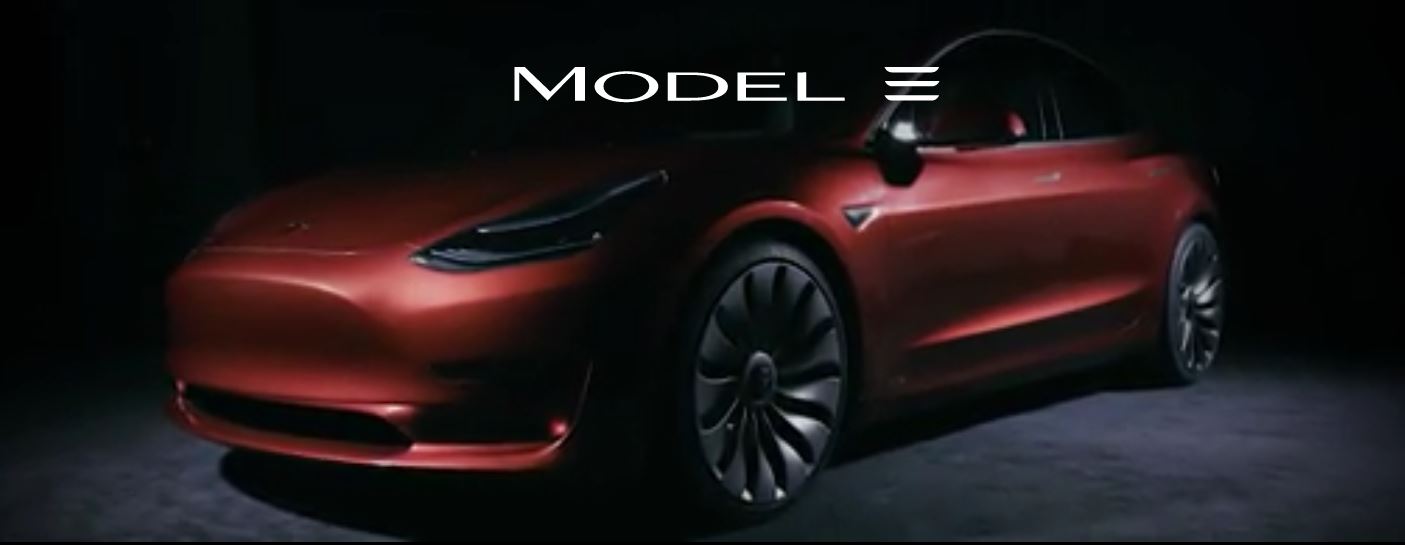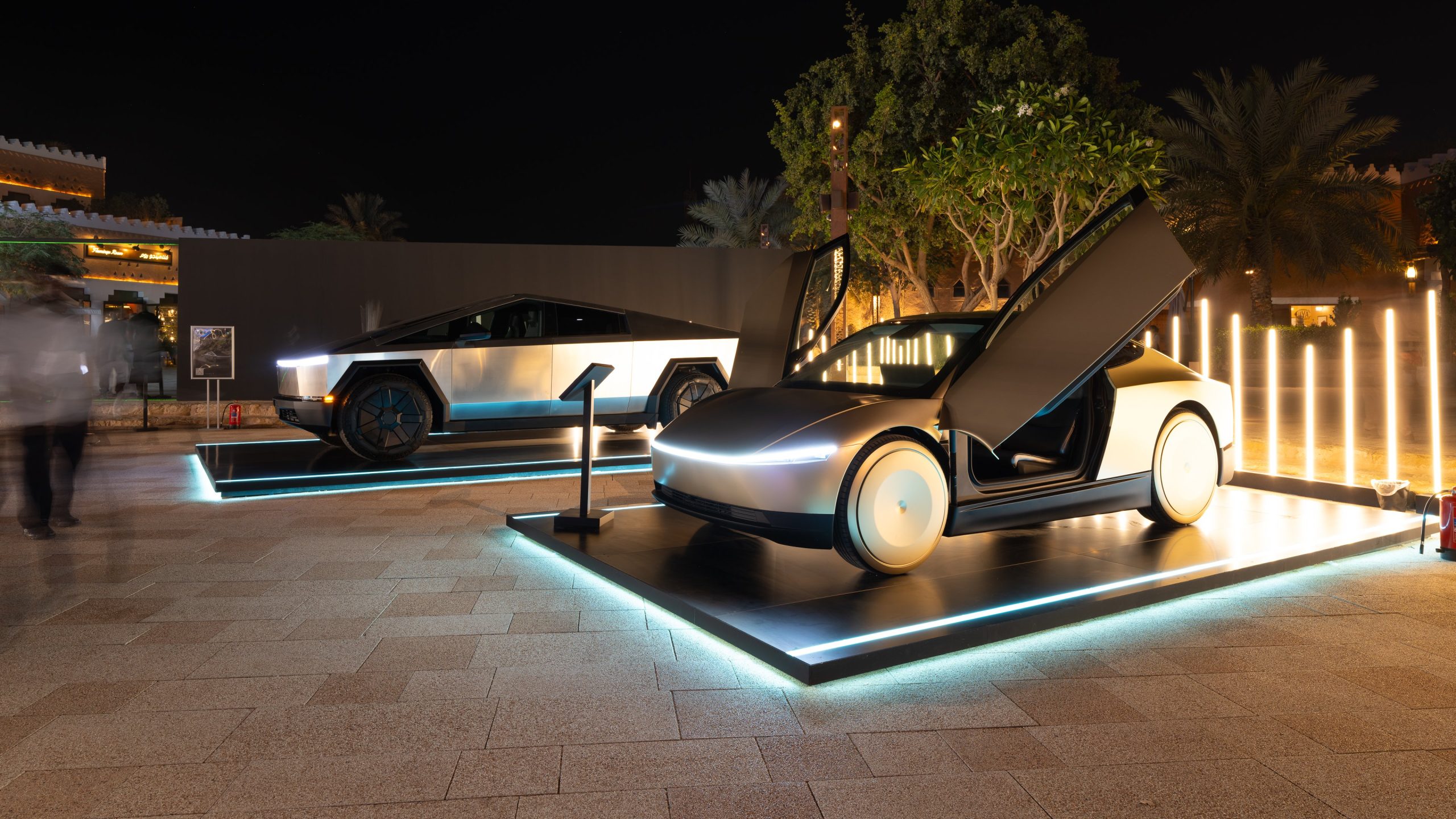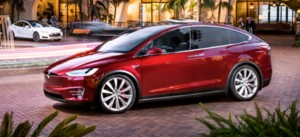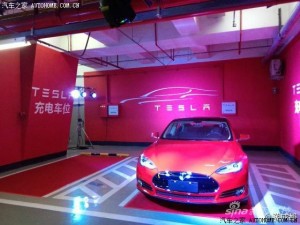Investor's Corner
What the Tesla Model 3 Means for the Planet’s Future

Tesla CEO Elon Musk’s overarching goal of converting the world from using fossil fuel powered cars to electric vehicles is coming to fruition. Or so it would seem after the company has secured nearly 300,000 reservations on its upcoming mass-market Model 3.
But is the world really on the cusp of a green car revolution? According to the Washington Post, our enthusiasm should be tempered with a healthy dollop of reality. “Even if Tesla manages to scale up and hit its very aggressive target of 500,000 vehicles a year by 2020, that would still represent only about .5 percent of global light-duty vehicle sales,” said Colin McKerracher, head of advanced transport at Bloomberg New Energy Finance. “So it’s hard to have an overall impact from them alone.”
The U.N.’s Intergovernmental Panel on Climate Change estimates that greenhouse gas emissions from transportation transportation total 7 billion tons annually. That number is projected to rise to 12 billion tons by 2050 in the absence of any significant policy shifts. Several experts suggested this week that booming sales of Tesla automobiles won’t have a significant impact on the global vehicle market.
Today, global sales of light duty vehicles are a staggering 88.5 million a year according to Navigant Research. That number is expected to grow dramatically as sales in India and Asia skyrocket in the years ahead. In comparison, 500,000 Teslas are just the proverbial drop in the bucket.
-->
The real question is what effect the success of the Model 3 will have on global cultural norms and other manufacturers. “It’s obviously important for Tesla, but I think it’s going to push other automakers to match what Tesla’s doing, and also get other people to think about switching to electric,” said David Reichmuth, a senior engineer in the clean vehicles program at the Union of Concerned Scientists.
Bloomberg New Energy Finance predicts electric vehicles sales will total less than 5% of total global sales until 2022. After that, falling battery prices will finally make electric cars truly price competitive with conventional cars. Bloomberg thinks it will be 2040 before the number of electric cars sold each year gets really impressive. By then, 35% of cars will be electric and EVs will comprise 25% of the cars in the world.
Regulatory and cultural changes will have a large effect on how rapidly the world decarbonizes the transportation sector. In China, government policies strongly favor electric cars. As a result, sales of so-called "new energy vehicles" -- which include hybrids, plug-in hybrids, and battery electric cars -- are expected to triple this year and continue to expand rapidly in the years to follow. Those policies will alter the Chinese culture. Electric cars will likely be preferred over conventional cars in China within a few years.
Tesla Model X Signature Red offered on Tesla China website (left). Tesla Model S in Chinese showroom (right) [Source: Tesla Motors]
Autonomous cars could also dramatically reduce transportation emissions.That's according to a study by Jeffrey Greenblatt and Samveg Saxena of the Lawrence Berkeley National Laboratory. Tesla obviously is positioning the Model 3 to feature advanced autonomous driving features when it goes into production.
Just like wind and solar power, electric cars may enjoy a period of very rapid growth, but that in and of itself will not solve the world's carbon emissions problem. Will people look back on the introduction of the Model 3 as the "tipping point" when the balance between internal combustion engines and batteries began to shift? Quite possibly. Certainly Tesla is raising awareness about electric cars and forcing other car makers to invest in battery and autonomous technology.
But there could be a long way to go before the people on earth can say they have conquered their carbon emissions problem. A rhetorician would argue that Tesla is doing what's necessary to promote change but not sufficient to make that change complete.
Feature photo credit: Tesla Motors

Investor's Corner
SpaceX IPO is coming, CEO Elon Musk confirms
However, it appears Musk is ready for SpaceX to go public, as Ars Technica Senior Space Editor Eric Berger wrote an op-ed that indicated he thought SpaceX would go public soon. Musk replied, basically confirming it.

Elon Musk confirmed through a post on X that a SpaceX initial public offering (IPO) is on the way after hinting at it several times earlier this year.
It also comes one day after Bloomberg reported that SpaceX was aiming for a valuation of $1.5 trillion, adding that it wanted to raise $30 billion.
Musk has been transparent for most of the year that he wanted to try to figure out a way to get Tesla shareholders to invest in SpaceX, giving them access to the stock.
He has also recognized the issues of having a public stock, like litigation exposure, quarterly reporting pressures, and other inconveniences.
However, it appears Musk is ready for SpaceX to go public, as Ars Technica Senior Space Editor Eric Berger wrote an op-ed that indicated he thought SpaceX would go public soon.
Musk replied, basically confirming it:
As usual, Eric is accurate
— Elon Musk (@elonmusk) December 10, 2025
Berger believes the IPO would help support the need for $30 billion or more in capital needed to fund AI integration projects, such as space-based data centers and lunar satellite factories. Musk confirmed recently that SpaceX “will be doing” data centers in orbit.
AI appears to be a “key part” of SpaceX getting to Musk, Berger also wrote. When writing about whether or not Optimus is a viable project and product for the company, he says that none of that matters. Musk thinks it is, and that’s all that matters.
It seems like Musk has certainly mulled something this big for a very long time, and the idea of taking SpaceX public is not just likely; it is necessary for the company to get to Mars.
The details of when SpaceX will finally hit that public status are not known. Many of the reports that came out over the past few days indicate it would happen in 2026, so sooner rather than later.
But there are a lot of things on Musk’s plate early next year, especially with Cybercab production, the potential launch of Unsupervised Full Self-Driving, and the Roadster unveiling, all planned for Q1.
Investor's Corner
Tesla Full Self-Driving statistic impresses Wall Street firm: ‘Very close to unsupervised’
The data shows there was a significant jump in miles traveled between interventions as Tesla transitioned drivers to v14.1 back in October. The FSD Community Tracker saw a jump from 441 miles to over 9,200 miles, the most significant improvement in four years.

Tesla Full Self-Driving performance and statistics continue to impress everyone, from retail investors to Wall Street firms. However, one analyst believes Tesla’s driving suite is “very close” to achieving unsupervised self-driving.
On Tuesday, Piper Sandler analyst Alexander Potter said that Tesla’s recent launch of Full Self-Driving version 14 increased the number of miles traveled between interventions by a drastic margin, based on data compiled by a Full Self-Driving Community Tracker.
🚨 Piper Sandler reiterated its Overweight rating and $500 PT on Tesla $TSLA stock
Analyst Alexander Potter said FSD is near full autonomy and latest versions showed the largest improvement in disengagements, from 440 miles to 9,200 miles between critical interventions pic.twitter.com/u4WCLfZcA9
— TESLARATI (@Teslarati) December 9, 2025
The data shows there was a significant jump in miles traveled between interventions as Tesla transitioned drivers to v14.1 back in October. The FSD Community Tracker saw a jump from 441 miles to over 9,200 miles, the most significant improvement in four years.
Interestingly, there was a slight dip in the miles traveled between interventions with the release of v14.2. Piper Sandler said investor interest in FSD has increased.
Full Self-Driving has displayed several improvements with v14, including the introduction of Arrival Options that allow specific parking situations to be chosen by the driver prior to arriving at the destination. Owners can choose from Street Parking, Parking Garages, Parking Lots, Chargers, and Driveways.
Additionally, the overall improvements in performance from v13 have been evident through smoother operation, fewer mistakes during routine operation, and a more refined decision-making process.
Early versions of v14 exhibited stuttering and brake stabbing, but Tesla did a great job of confronting the issue and eliminating it altogether with the release of v14.2.
Tesla CEO Elon Musk also recently stated that the current v14.2 FSD suite is also less restrictive with drivers looking at their phones, which has caused some controversy within the community.
Although we tested it and found there were fewer nudges by the driver monitoring system to push eyes back to the road, we still would not recommend it due to laws and regulations.
Tesla Full Self-Driving v14.2.1 texting and driving: we tested it
With that being said, FSD is improving significantly with each larger rollout, and Musk believes the final piece of the puzzle will be unveiled with FSD v14.3, which could come later this year or early in 2026.
Piper Sandler reaffirmed its $500 price target on Tesla shares, as well as its ‘Overweight’ rating.
Investor's Corner
Tesla gets price target boost, but it’s not all sunshine and rainbows

Tesla received a price target boost from Morgan Stanley, according to a new note on Monday morning, but there is some considerable caution also being communicated over the next year or so.
Morgan Stanley analyst Andrew Percoco took over Tesla coverage for the firm from longtime bull Adam Jonas, who appears to be focusing on embodied AI stocks and no longer automotive.
Percoco took over and immediately adjusted the price target for Tesla from $410 to $425, and changed its rating on shares from ‘Overweight’ to ‘Equal Weight.’
Percoco said he believes Tesla is the leading company in terms of electric vehicles, manufacturing, renewable energy, and real-world AI, so it deserves a premium valuation. However, he admits the high expectations for the company could provide for a “choppy trading environment” for the next year.
He wrote:
“However, high expectations on the latter have brought the stock closer to fair valuation. While it is well understood that Tesla is more than an auto manufacturer, we expect a choppy trading environment for the TSLA shares over the next 12 months, as we see downside to estimates, while the catalysts for its non-auto businesses appear priced at current levels.”
Percoco also added that if market cap hurdles are achieved, Morgan Stanley would reduce its price target by 7 percent.
Perhaps the biggest change with Percoco taking over the analysis for Jonas is how he will determine the value of each individual project. For example, he believes Optimus is worth about $60 per share of equity value.
He went on to describe the potential value of Full Self-Driving, highlighting its importance to the Tesla valuation:
“Full Self Driving (FSD) is the crown jewel of Tesla’s auto business; we believe that its leading-edge personal autonomous driving offering is a real game changer, and will remain a significant competitive advantage over its EV and non-EV peers. As Tesla continues to improve its platform with increased levels of autonomy (i.e., hands-off, eyes-off), it will revolutionize the personal driving experience. It remains to be seen if others will be able to keep pace.”
Additionally, Percoco outlined both bear and bull cases for the stock. He believes $860 per share, “which could be in play in the next 12 months if Tesla manages through the EV-downturn,” while also scaling Robotaxi, executing on unsupervised FSD, and scaling Optimus, is in play for the bull case.
Will Tesla thrive without the EV tax credit? Five reasons why they might
Meanwhile, the bear case is placed at $145 per share, and “assumes greater competition and margin pressure across all business lines, embedding zero value for humanoids, slowing the growth curve for Tesla’s robotaxi fleet to reflect regulatory challenges in scaling a vision-only perception stack, and lowering market share and margin profile for the autos and energy businesses.”
Currently, Tesla shares are trading at around $441.










